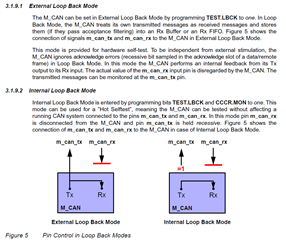Hi Team,
1.
TCAN4550 cannot loop back mode issue:
In the state of protected registers enable, set the loop back mode bit of Test register (0x1010) to 1

The read register data is 0
Current status from CCCR is 0x00000218
Other protected registers are successfully written
Are there any other related settings for loop back mode that need attention?
2. Does Vio need delay? ms



